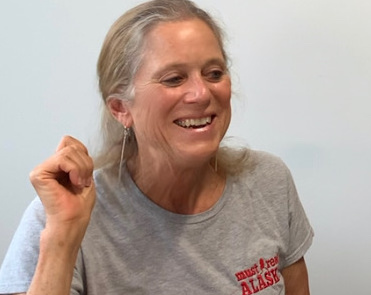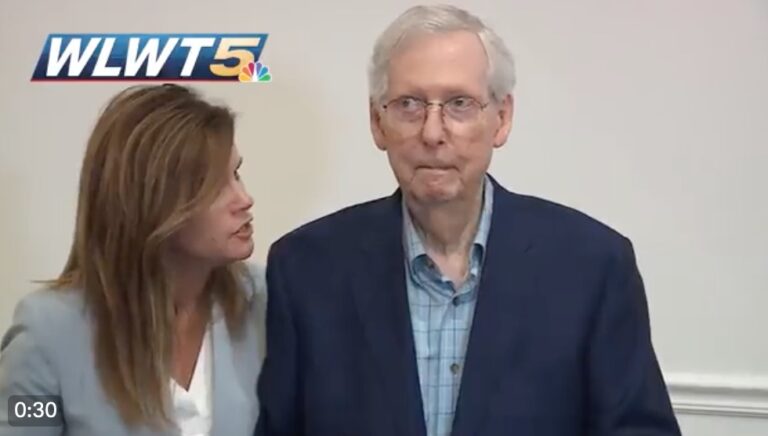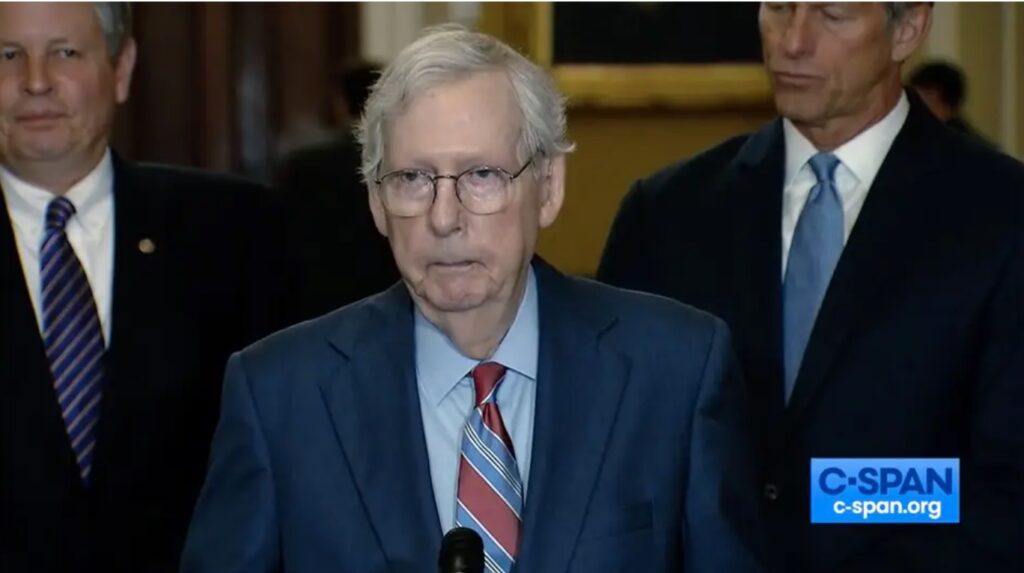By CHARLES LIPSON | REAL CLEAR WIRE
President Biden has declared he’s running for a second term, but it’s far from certain he actually will. His infirmity and low poll numbers raise serious doubts. His physical decline shows when he walks or climbs the stairs of Air Force One.
His cognitive decline shows when he refuses to hold press conferences or answer even the simplest questions, like how he feels about the devastating fires in Maui. His decline in the public’s estimation shows when pollsters ask Americans how they’re doing. Four out of five answer, “Not good. Not good at all.”
Voters also say they don’t want another general election choice like the last one. So many votes in 2020 were negative ones “against the worse candidate,” not in favor of the better one. They don’t want another grudge match between two unpopular candidates.
Biden’s dismal poll numbers form a somber backdrop for his reelection campaign. That backdrop is even darker now that his health problems are so visible. These mounting problems may not prevent him from running, but they do lessen the chances. True, he keeps saying he is running. But, like all politicians, he may be deceiving the public or himself. The biggest “tell” is that Biden is avoiding the very things active candidates do. He’s not campaigning. He’s not attending a lot of small events with big donors. He’s not running ads. He’s not using the White House’s bully pulpit to address the nation on our challenges and his response to them.
Still, those signs are not definitive. Biden might be lying low because the Republicans are fighting among themselves. Why get in their way? Better to wait until late autumn to ramp up his campaign.
He might be unsure if he really is running, uncertain if he is up to the arduous task, physically and mentally.
Or he might have already decided, privately, that he will not run but is delaying the announcement since it would immediately turn him into a powerless lame duck.
At this point, it’s impossible to know what he has decided. He might not know himself. But it is well worth considering the implications if Biden limits himself to one term and waits until late fall or early spring to make the announcement.
The first implication is that a late withdrawal favors some Democratic candidates over others. It favors those with high name recognition, existing campaign operations, and the ability to fund expensive national efforts, either from outside donations or their own pockets. California Gov. Gavin Newsom has already established his campaign-in-waiting and can raise lots of money, especially from big donors in his home state. Illinois Gov. JB Pritzker is a billionaire who can fund his own run and has begun setting up a national team. Michigan’s Gov. Gretchen Whitmer, by contrast, would be several steps behind and would need to raise a lot of money quickly to become a viable candidate.
So would Minnesota Sen. Amy Klobuchar, Colorado Gov. Jared Polis, Pennsylvania Gov. Josh Shapiro, or others who might step into the wide-open race. One candidate who is already running, Robert F. Kennedy Jr., would stay in the race, trading on his family name rather than his conspiracy-fueled ideas.
Interestingly, no one in the Biden cabinet seems poised to make a run. That lackluster group is the faceless front of the administrative state. The only name even mentioned is Pete Buttigieg, and that very seldom. The one-time darling of the media has faded from consideration amid his troubled tenure at the Transportation Department. He’s the Beto O’Rourke of this round.
The second consequence of a Biden withdrawal would be a fight over the future of Kamala Harris. She is the least popular vice president in polling history, and for good reason. Voters think she’s incompetent, inauthentic, and inarticulate, an empty-calorie word salad without any policy achievements. She’s the living embodiment of the “Peter Principle,” where people keep getting promoted until they reach their level of incompetence. She has reached that lofty level, just as Dan Quayle did during George H.W. Bush’s presidency.
Kamala’s bleak showing in the polls is particularly striking because she took office with enthusiastic support from every legacy media outlet. They loved her, even though ordinary Democratic voters did not. In fact, those voters were so sour on Kamala that she withdrew before the first primary or caucus in 2020. She was polling near zero. She could raise money, at least initially, but she couldn’t raise enthusiasm or votes. She still can’t. With each failure, she tries to reintroduce herself to the public. It hasn’t worked.
Unfortunately for Democrats, Kamala’s presence as second-in-line poses a thorny problem, whether Biden runs or not. If he runs, she’s an albatross on the ticket because voters are worried Biden might not make it through a full second term. They really, really don’t want to see Harris step into the Oval Office by default.
If Biden decides not to run, Harris poses a different problem. She is the country’s highest-ranking African-American officeholder in a party built around identity politics and strong turnouts by blacks, especially black women. That dependence on black votes is why Biden picked her in the first place (remember, he promised to pick a black woman), and it’s why he cannot drop her from the ticket. If Biden doesn’t run and Harris sinks to the bottom in an open primary, the result could alienate a vital constituency and depress turnout in that crucial group.
The third implication concerns Hunter’s legal troubles, which touch on other family members and the patriarch himself. The president could solve the legal peril instantly by pardoning family members who face criminal exposure. Biden’s press secretary rejected the possibility. Asked if Hunter might receive a presidential pardon, Karine Jean-Pierre replied with a single word: “No.”
The White House knows the uproar – and political damage – a pardon would cause. It would imply guilt, impede a full disclosure of all criminal acts, gut the very notion of unbiased justice, and appear nakedly self-serving.
The Bidens’ political and legal problems are not merely that family members made a lot of money, but that they made it while Joe Biden was vice president and made it without any visible business skills.
Equally important, the money came from foreign businesses in the very countries where he directed U.S. foreign policy, at President Obama’s behest. The family leveraged Biden’s official position for some $20-40 million, funneled through an opaque web of LLCs. They were selling political connections and access, not business expertise. The LLCs were formed when Joe Biden was vice president and had no legitimate business purpose.They were designed to hide to sources and distribution of income.
The president’s direct involvement in these schemes is still murky. Proving he knew, or worse, aided them, is the goal of Republican House investigations and a possible impeachment inquiry.
Whether or not any felonies can be proven, such as money laundering or Hunter’s failure to register as a foreign agent, is an open question. Not that the Department of Justice has pursued them vigorously. Quite the contrary. Their lax treatment of the president’s family and suppression of the IRS investigation is a scandal in its own right.
If President Biden does eventually pardon his family, the ensuing uproar would end his administration’s political life and lead inexorably to an impeachment vote. That’s why the president would be well advised to wait beyond the November election before giving his family a “get out of jail free” card. Even then, it would trash his legacy.
What about Republicans? What would Biden’s withdrawal mean for them? At this stage, it’s impossible to know. It’s too early to tell if it would hurt or help Trump, either in the primaries or the general election.
One possibility is that a new face on the Democratic side would encourage Republicans to pick a new face themselves. But there are still too many unknowns to have any confidence in a prediction.
One thing we do know is that Biden’s promise to run for a second term does not guarantee he will stay in the race. He could still decide he’s too old, too infirm, or too unpopular to make the arduous uphill climb.
And we know one more thing: If Joe Biden does pull out, his decision will send shockwaves across the American political landscape.
Charles Lipson is the Peter B. Ritzma Professor of Political Science Emeritus at the University of Chicago, where he founded the Program on International Politics, Economics, and Security. He can be reached at [email protected].
This article was originally published by RealClearPolitics and made available via RealClearWire.










